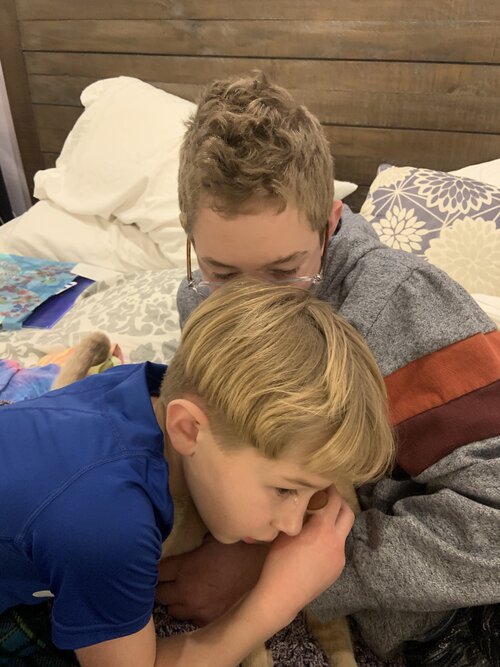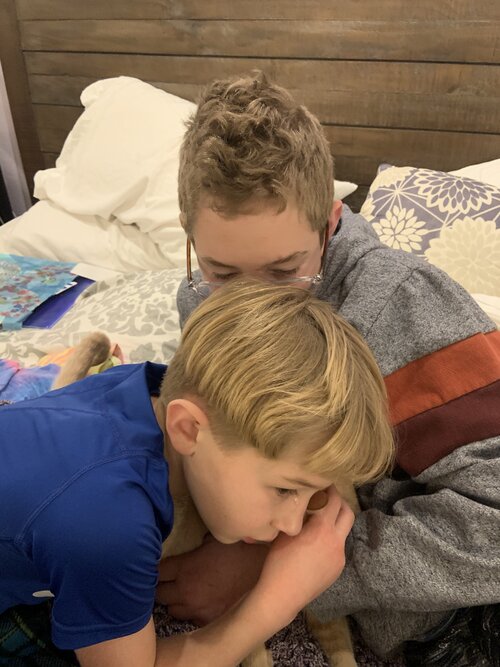
I don’t know about you, but, since the start of COVID-19, my family has been in this strange twilight zone between all the rest we ever wanted and not enough rest at all. How is this limbo possible? It is true that the frenetic pace of our life has slowed substantially, but our new life patterns have allowed for later bedtimes, less specific downtime, “I’m bored” time, and a level of emotional fatigue that none of us has ever experienced.
Enter Dr. Saundra Dalton-Smith and her amazing TED ideas post about the seven different kinds of rest you need. As I read through her post, not only did it immediately resonate with my own lived experience, I also started thinking about our kids and what rest means for them. So, here are my thoughts on how creativity and art can bring more rest to your family.
1. Physical Rest
The first kind of rest that Dr. Dalton-Smith talks about in her article. This is that typical, lying in bed for 8-10 hours per night type of rest. For kids, right now, the level of anxiety that is just in the air all around us can make sleep harder than normal. An arts strategy that can help bring a restful night of sleep is relaxation. In my house, after we read books, we do a 2-3 minute relaxation that starts with taking three deep breaths in through the nose and out through the mouth. Then I tell a calming story about being in a beautiful place in nature, and we just visualize and imagine using all of our senses. If we are in a meadow, we might hear the birds chirping, smell the flowers around us and feel the sensation of the grass on the back of our legs. For more information on how to do relaxation, check out this blog.
2. Mental Rest
For adults, Dr. Dalton-Smith recommends scheduling a break in your workday every two hours or keeping a notepad nearby at bedtime to write down anything that is spinning in your mind. For kids, we can use mini art engagements throughout the day, to shift their minds from their school work to a relaxed mental state. Try keeping modeling clay near their work station if they are homeschooling. They can create an entire zoo of 2-inch animals over the course of a month!
3. Sensory Rest
This is all about a break from the onslaught of electronic inputs that have invaded our lives. For kids, getting them outside and away from screens is a critical step to finding sensory rest. Games are a big part of play and creativity, so try a backyard or neighborhood scavenger hunt where you assign six things they need to find in under 10 minutes—a rock that is a weird shape, a tree that is taller than a swing set, a leaf that is not green, etc.
4. Creative Rest
This is about allowing our brains to be inspired by beauty and art that already exists in the world instead of being in create mode. For our kids who are innovating and making all day and all night (even if it is on Minecraft) the opportunity to be inspired by beauty is important right now, even if it’s not in person. Maybe try a virtual museum tour? Or watch some breathtaking dance?
5. Emotional Rest
Challenge yourself and your kids to express your emotions instead of hiding behind the mask of “I’m fine.” For kids, using the arts is a perfect way for them to express their emotional reality. Dancing their anger, painting their frustration, writing their sadness are all creative strategies for bringing their experience to light in a safe and honest way.
6. Social Rest
This is permission to differentiate between the relationships that are giving you energy and those that are draining it. For kids, right now, this can be very challenging, because they have very few options (if any) for finding other kids to hang out with. For kids, I think social rest might look like taking a moment to engage in imaginative play as if we were their friends on the playground. Ask, “If we were with your friends right now, what would you be doing?” And then make that happen! Yup, you might have to pretend to be a five-year-old…I promise it will be worth it!
7. Spiritual Rest
The last type of rest that Dr. Dalton-Smith describes, is connecting to something greater than yourself. For some adults, that might look like prayer, meditation, or volunteering in the broader community. For kids, the art connection to Spiritual Rest could be creating posters to put up in the window with pictures that might brighten the day of anyone walking by. Or you could put on music and prompt your child to visualize an impressive place in nature that they have been (the beach, a forest, the Grand Canyon) and let the music and the image inspire them to paint a picture that represents the beauty of the world around us.
I hope these seven elements of rest are as helpful to you as they have been to me. I think we could all use some inner peace right now.
